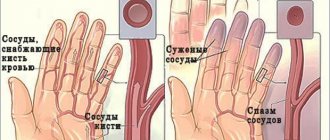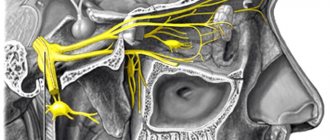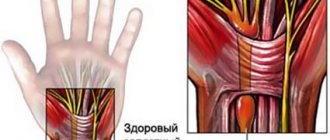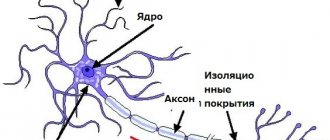Depressio.ru » Other diseases » Personality disorders
Paranoid syndrome is a systematic and time-stable delusion of varying content. Delusions can be of any nature: from delusions of jealousy and damage, to delusions of invention, special origin or hypochondriacal delusions. The peculiarity of this syndrome is that it develops slowly, and the symptoms seem to be layered on top of each other.
- Basic information
- Symptoms of the disease
- Development of pathology
- Correction and treatment
Basic information
Let us immediately note that with paranoid syndrome there are no hallucinations or mental automatisms.
With the dynamics of the disorder, a person’s behavior begins to become more and more determined by the picture of delusion. In particular, paranoid delusions often become the cause of a tendency to litigiousness, conflicts and everyday disagreements. A general distrust of everything that happens develops, paranoia becomes the main feature of a person’s character, a personality disorder.
Along with the development of the picture of delirium, thought processes change, and more and more paralogical and incomprehensible connections arise in the patient’s thinking. Thought processes become rigid, and the plasticity of thinking gradually decreases. First of all, this is noticeable by the impoverishment and change in speech.
Everything that happens around, if it does not fit into the picture of delirium, is either transformed in a way convenient for the patient, or is completely ignored.
Here we come to an important point: how to distinguish delusion from a strong belief in something?
Delirium cannot be changed at all; neither logical connections nor demonstration of facts can change the picture of delirium. Everything the patient sees, learns and hears will be modified to suit the delusional picture.
It is obvious that delusions, paranoid or any other, affect the patient’s social relationships. Relationships with loved ones change, distance from relatives occurs
And, as you know, autism is the most important characteristic of patients with schizophrenia. It is with this disease that paranoid syndrome most often develops, which can later be diagnosed as paranoid schizophrenia. The diagnostic criterion is the presence of hallucinations and other features of schizophrenia.
Often this syndrome develops in old age with vascular psychoses. It can also develop in a slightly modified form with brain injuries, alcoholism or epilepsy. In all of these forms, paranoid accentuation is a consequence of the underlying disease.
Pathogenesis of the disorder
Many scientists consider paranoia to be an independent form of mental disorder. The pathology is characterized by gradually developing delusions that occur without visual or auditory hallucinations. But often its appearance is accompanied by false memories. Over time, delirium becomes persistent.
The patient's mood is closely related to obsessions. In certain cases it can be suppressed, expansive or increased. In this case, the pathology is not accompanied by a pronounced change in mental abilities. There is a tendency to detail and thoroughness in thinking. The patient's behavior may remain unchanged for a long time.
Symptoms of the disease
Now about the symptoms and probable causes of the disease. The main risk factor is considered to be genetic readiness to develop the disease; among patients, more than 45% have a hereditary burden of psychiatric diagnoses.
Other reasons (acting together) may include:
- suspicion;
- egocentrism;
- low self-criticism;
- distrust;
- unhealthy straightforwardness;
- pathologically high self-esteem and level of aspirations.
Paranoid personality disorder is accompanied by:
- Initial “fascination” with delirium. Activity is increasing, people are trying in every way to prove to others the correctness of their nonsense. At first, those around them may believe them.
- The description of your ideas is carried out in the smallest detail. People are verbose and do not miss any detail.
- Absolutely all ideas are connected with the main delusional background. Everything that happens, one way or another, fits into the picture of delirium.
- The main direction of delirium is always highlighted. The remaining “branches” of the delusional tree develop around the main idea.
- If it is impossible to distort the facts, the latter are simply denied or fall out of focus.
- Delusional confabulations – false memories – may occur.
You should not try to dissuade the patient of the incorrectness of his delusions. For loved ones, this is a danger of falling under “suspicion” from the point of view of the patient’s theory; for outsiders, this is a risk of running into aggression.
In terms of aggression, paranoid psychopathy, which combines psychopathic traits and delusional ideas, is particularly dangerous.
History of diagnosis
Paranoid syndrome began to be studied in more detail after the disease was identified as an independent disease. In 1915, a number of scientists proved that pathology is accompanied by interpretive delusions and that often all the patient’s thoughts are systematized.
Later, already in 1934, in the works of V.M. Morozov, it was proven that patients develop persistent delusional thoughts over time. All conclusions have a special system and patients are confident that they are right.
Also in the works of A.B. Smulevich and M.G. Shchirina in 1972 found that in some cases the disease develops like an epiphany, acutely and suddenly.
Development of pathology
The danger and complexity of this disease is due to the fact that the dynamics of development are always progressive, but in the first (latent) stages it may be impossible even for a specialist to notice the pathology. In principle, the diagnosis is made solely on the basis of long-term observation. Here and now, it is possible to accurately establish the disease only in cases where a person comes to an appointment with a detailed delusional picture and a rich history.
It is precisely because of the smooth development and the impossibility of early diagnosis that the onset of the disease and the favorable period for treatment can be missed. Moreover, some people can pose a real threat to the environment.
Delusions of persecution or harm can result in acts of violence against people who “threaten” the patient. Unfortunately, there are even known cases of torture with paranoid syndrome in the picture of schizophrenia.
Paranoid psychopathy, the symptoms of which have an aggressive connotation, in principle requires isolation from society in the first stages of treatment.
At the same time, there are also acute forms of the disease: they are much easier to track, since the patient’s behavior changes dramatically. In this case, the delirium is of an undeveloped, fragmentary nature. Such attacks can develop as precursors of PTSD or as a consequence of taking certain nootropics.
With the development of paranoia in the picture of schizophrenia, expansive schizoid or paranoid manifestations harmoniously combine with each other, leading the patient to even greater alienation from the world and strong distrust of the environment.
Also, the schizophrenic development of paranoid disorder leads to an increase in the patient’s aggressiveness. Suppose the ideas of persecution and jealousy are combined in delirium: the patient may begin to actively look for imaginary rivals, while being convinced that they wish him harm. There are not only attempts to “figure out” the enemy, but often also to kill him. As a rule, such extensive actions are already accompanied by hallucinations, and we are talking not so much about paranoia as about schizophrenia with its features.
Hallucinatory-paranoid syndrome
This syndrome is a complex mental disorder of a person in which he feels the constant presence of strangers who are spying on him and want to cause physical harm, even murder. It is accompanied by frequent occurrence of hallucinations and pseudohallucinations.
In most clinical cases, the syndrome is preceded by the strongest in the form of aggression and neurosis. Patients are in a constant feeling of fear, and their delirium is so diverse that against its background the development of automaticity of the psyche occurs.
The progression of the disease has three stable stages, following one after another:
- A lot of thoughts swarm in the patient’s head, which every now and then pop up on top of those that have just disappeared, but at the same time it seems to him that every person who sees the patient clearly reads thoughts and knows what he is thinking about. In some cases, it seems to the patient that the thoughts in his head, not his, but those of strangers, are imposed by someone through the power of hypnosis or other influence.
- At the next stage, the patient feels an increase in the heart rate, the pulse becomes incredibly fast, cramps and withdrawal begin in the body, and the temperature rises.
- The culmination of the condition is the patient's awareness that he is in the mental power of another being and no longer belongs to himself. The patient is sure that someone is controlling him by penetrating his subconscious.
Hallucinatory-paranoid syndrome is characterized by the frequent appearance of pictures or images, blurry or clear spots, while the patient cannot clearly describe what he sees, but only convinces others of the influence of an outside force on his thoughts.
Correction and treatment
Since paranoid disorder is largely a psychiatric disorder, it should be treated and prescribed exclusively by a psychiatrist. Psychologists play a secondary role here.
The main method of treatment today is psychopharmacological intervention. The goal of such treatment is to suppress the psychopathological symptoms of the disease. Prescribed drugs can be taken both in usual conditions and in hospital treatment.
The selection of drugs, dosage and duration of use is a delicate issue, which is also decided exclusively by a psychiatrist on the basis of multiple tests and anamnesis.
The heavy artillery in treatment is antipsychotic agents. With their help, the symptoms of delirium are quickly suppressed. If there is hallucination and interpretive delusion in the picture, other substances (of the butyrophenone class, for example) may be prescribed.
When the underlying disease is aggravated by depressive symptoms, appropriate medications are included in the main course of treatment. Chronics are prescribed regular courses of medication with short breaks.
If you have aggressive behavioral traits, you should not rely on chance and refuse treatment in closed institutions. Basically, therapy with this type of treatment does not change, except that regular sessions with psychotherapists and in groups are added.
Treatment forecasts
Treatment usually gives good results. Even if the patient, after the removal of active symptoms, is not entirely critical of the experience, over time the delusional idea completely loses its significance for the person.
However, let us make a reservation that we are talking about a “pure” syndrome. In general, the prognosis is positive, especially if the disease was noticed in the early stages.
As a rule, most patients return to normal social life, but some of them require special socio-psychological adaptation in society. It is at this stage that psychologists and psychotherapists get involved in the work, and former patients are often scheduled for regular reporting meetings with the attending physician or supervising psychologist.
Many people need help restoring family relationships shaken by illness, and family psychotherapy and joint counseling with a partner can help here.
So, to summarize: paranoid disorder is not a death sentence.
Author of the article: Borisov Oleg Vladimirovich, developmental psychologist
Drug therapy
The leading specialist in solving problems of mental personality disorder is a psychotherapist. In certain cases, if the disease is caused by the influence of drugs or alcohol, a specialist must work in tandem with a narcologist. Depending on the degree of complexity of the syndrome, medications will be selected individually.
For the treatment of mild forms, the following remedies are indicated:
- "Propazine."
- "Etaperazine."
- "Levomepromazine."
- "Aminazine."
- "Sonapax".
Moderate syndrome is treated with the following drugs:
- "Aminazine."
- "Chlorprothixene."
- "Haloperidol."
- "Levomepromazine."
- "Triftazine"
- Trifluperidol.
In difficult situations, doctors prescribe:
- "Tizercin."
- "Haloperidol."
- "Moditen Depot".
- "Leponex".
The attending physician determines which medications to take, their dosage and regimen.
Classification according to ICD-10
In the international classification of diseases intended for use in Russia, delusional disorders have code F 22.01. It also includes paranoid development.
Also, other delusional personality disorders, including the querulant form, belong to the section coded F28.8 and F28.88. In the official ICD-10, paranoia is not classified as a separate section and corresponds to delusional disorder, code F22.0.
With a mild course of the pathology, they speak of paranoid disorder, the code of which, in accordance with ICD-10, is F60.0. In this case, the term “paranoid” means something similar to paranoia.
In addition, there is another form of personality disorder similar to paranoia. Paranoid schizophrenia. In the ICD, adapted for use in Russia, it belongs to the heading F22.03 - paranoid schizophrenia.









